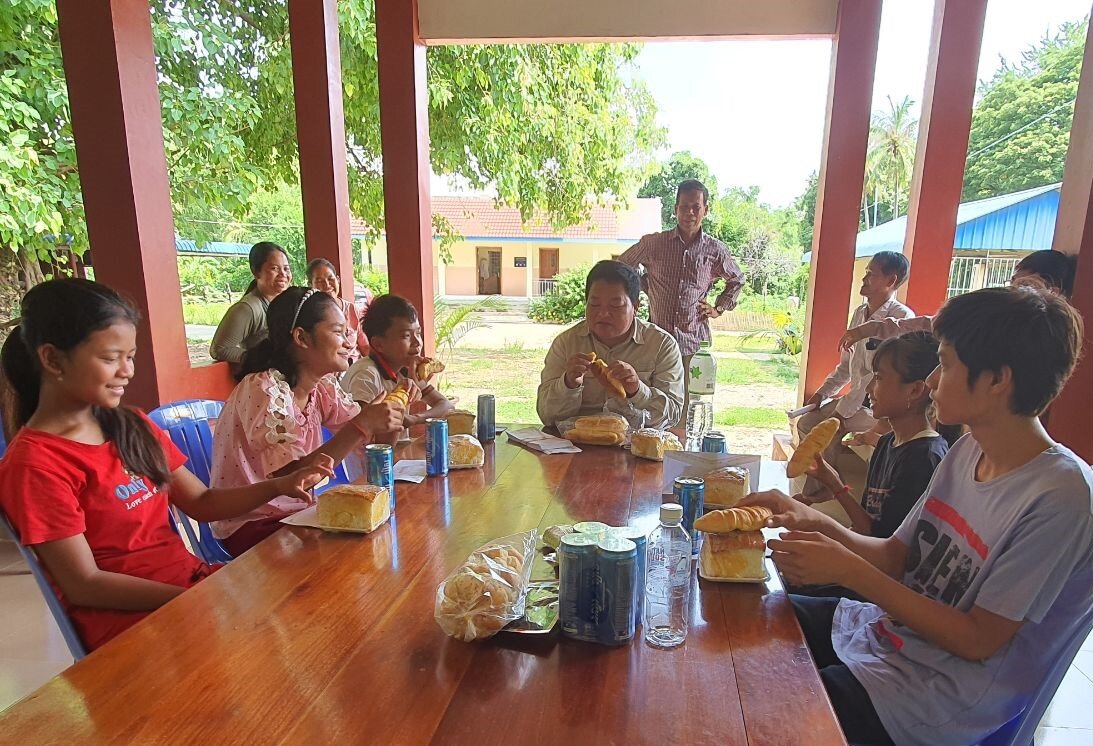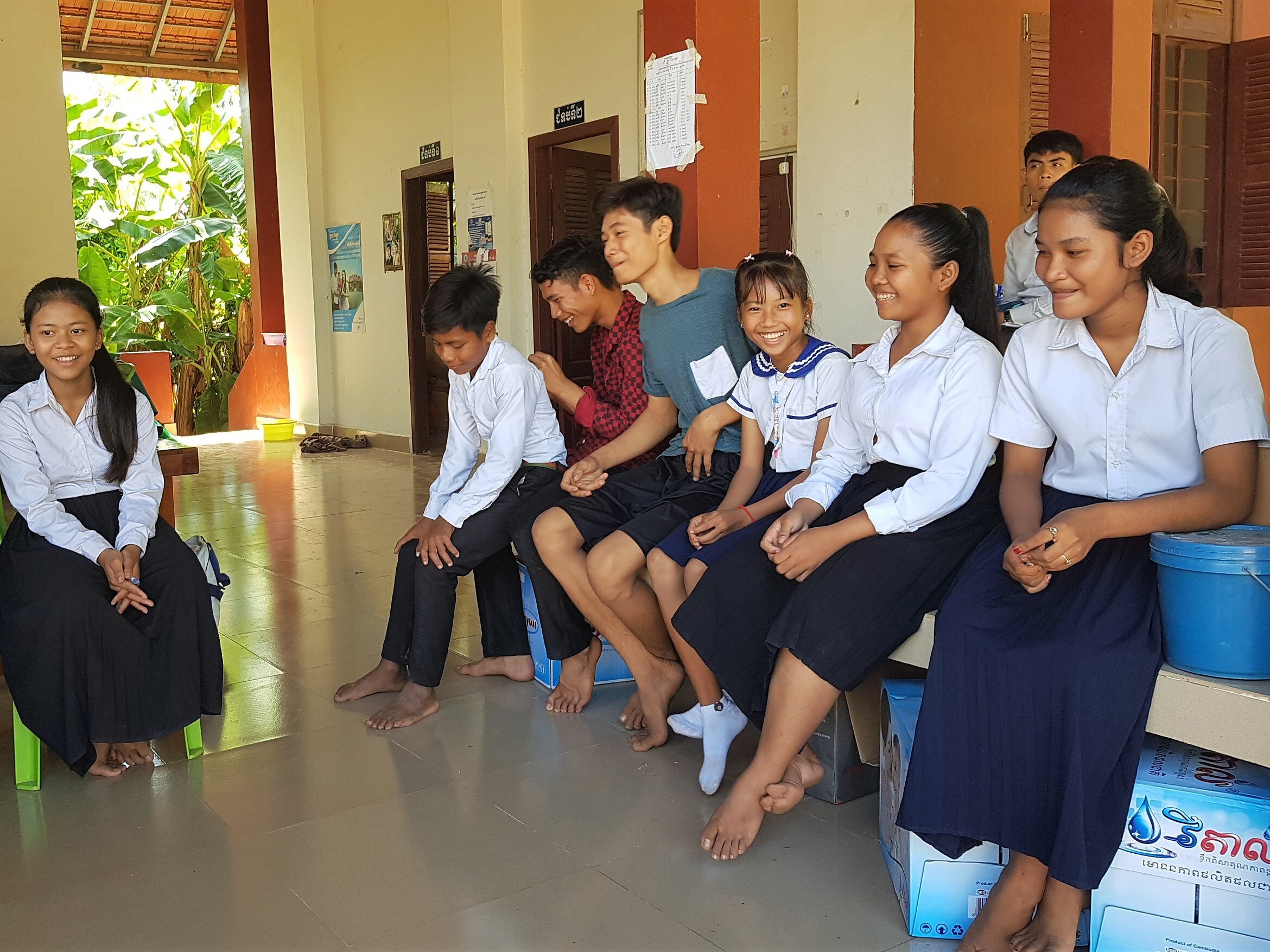Challenges and opportunities in supporting foster children in Cambodia
Editor’s note: This is the second article in a two-part report by Yuka Takahashi about her visit to Cambodia last November (read the first part here), where she was able to meet the foster children that members of WFWP in New Jersey have been actively supporting for the last five years. The Cambodia Foster Parent Project focuses on providing education to children in impoverished rural regions of the country, including Kratié and Takéo provinces.
About two weeks after visiting a school in Takéo Province, we met with foster children on an island in Kratié Province, in the northeast region of Cambodia, on November 21, 2020. In addition to stationery, toothbrushes and toothpaste, we prepared clothes and donated toys to present as gifts to the young students. Many children in Takéo (a southern province that borders Vietnam) are repeating the same grades as last year and a few have even dropped to lower grades, but children on the island have mostly moved up to the next grade smoothly. This could be due to different school systems.
Due to the Covid-19 restrictions, travelling between provinces and holding meetings were limited, especially last spring. It was in the summer that our local staff could visit the island children for the first time in 2020. At that time, we gathered with only the children who were able to come together. To reach the others, we visited their houses, or met them on a different day, or asked a local villager who is in charge of the foster children program to deliver the support money.
This time in November, we asked the children to try an easy writing assignment. In Takéo, we’ve been doing some word games and writing activities and it seems children there have been gradually getting used to writing, while children here actually have few opportunities to write essays in daily lives. We asked them to write about their favorite things, including favorite or good points about themselves, but it seems many felt it difficult to write various details according to the theme. We would like to increase this kind of activity little by little, as we’ve done in Takéo, so that they can more freely express themselves, hopefully.
Getting to know the new foster children
On our visit, we found out that two of the foster children stopped going to school and left our program unfortunately, in order to work or to stay with a distant relative because of poverty. On a positive note, seven new foster children were chosen to join our program.
Children in orphanages or other places that often receive foreign volunteers are used to strangers and they easily welcome them with cheerful smiles. In contrast, our foster children are not used to such visits and usually don’t smile the first time we meet them. For some children, even at the second visit, they’re still hesitant. However, after a few opportunities to interact, I have noticed that they started to show their smiles. And their smiles are so lovely! We hope these children can continue studying as much as possible and thus open the way for a bright future.
If you are interested to find out more or wish to support this project, please contact WFWP Clifton NJ Chairwoman Hiroko Nitro at hirokonitro@hotmail.com.





